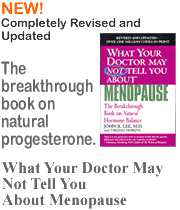|
|
||||
|
For suggestions on how to find a doctor in your area, please go to:  |
||||
Serendipity Crib Life Mattress Cover A POSSIBLE EXPLANATION FOR SIDs by Holland Franklin Sudden Infant Death Syndrome (SIDS), or crib death, is the unexpected death of an infant which is not explained by any known cause in the babyís health or in its environment. It is the leading cause of death in infants from one to six months of age. SIDS risk begins at about two weeks after birth, then declines after a peak in the third month when the babyís immunity acquired from the mother tapers off, and is rare after one year. Since WW II about 1 million infant deaths have been attributed to SIDS. SIDS deaths were quite rare before that time. It occurs almost exclusively in Europe, Australia/New Zealand and the United States. The United States alone continues to have over 3,000 SIDS deaths each year. The Mattress Connection Many ideas have been proposed to explain SIDS, but none has been comprehensive or convincing until the theory presented by Barry Richardson, a British expert in materials degradation. His theory was validated by the research of Dr. T. James Sprott, a New Zealand chemist and forensic scientist. Their research demonstrates that SIDS may be the result of accidental poisoning due to toxic gases released from baby mattresses. These gases are produced by the interaction of common household fungi with phosphorus, arsenic and antimony, chemicals which are either present naturally in the mattresses or which have been added as flame retardant chemicals. The fungi are harmless by themselves but feed on these chemicals. The byproducts are the gases phosphine (PH3), arsine (AsH3) and stibine (SbH3). These nearly odorless gases breathed even in small quantities for an extended time can interrupt the choline/acetylcholine transfer of nervous impulses from the brain to the heart and lungs. This shuts down the central nervous system; heart function and breathing stop. The gases are heavier than air, and about 1,000 times more poisonous than carbon monoxide. A baby sleeping on its stomach is in the zone above the mattress where the gases are most dense. Repeated exposure to these gases, especially in combination with other insults to a babyís immune systems, can result in toxic overload and death. There has been no research to date which has disproved this theory or offered a better one. Research in 1994 by Richardson showed high levels of antimony in livers of SIDS babies. Antimony is not normally present in a healthy baby, and does not show up in autopsies of babies who slept on mattresses free of phosphorus, arsenic and antimony. This means that SIDS is an environmental problem, not a medical one. Areas of the world where mattresses containing these chemicals are used have a much higher incidence of SIDS. Areas in the world where fungus is ubiquitous, such as in Japan, Hong Kong and the Pacific Islands, but where mattresses do not contain these chemicals do not have a problem with SIDS. The Fungus Connection Fungal growth is sped up when moisture from the babyís body such as perspiration, urine, drool, etc. penetrates the bedding and provides a growth medium for the fungus. Growth is also sped up by increased body heat, especially if a baby has a temperature from tightly wrapped covers, higher room temperature, infection in a compromised immune system, and/or a reaction to vaccinations. Boy babies with their increased metabolism have a 30 percent higher incidence of SIDS than girl babies. British researcher Peter Mitchell showed that babies later in the birth order have a higher incidence of SIDS deaths because over time, repeated use of the same mattress increases the amount of fungal spores present. The risk doubles with each child. Lower income families have more SIDS deaths because they are more likely to reuse bedding rather than buy new bedding for each child. Children of poor single mothers are at seven times the risk for SIDS. The Richardson theory was first made public in Britain in 1989. Public relations campaigns in both Britain and New Zealand have significantly reduced SIDS deaths. Manufacturers in Britain withdrew the use of toxic chemicals in their products. This was coupled with a campaign to have all babies sleep on their backs. Unfortunately there is resistance from researchers and health authorities in these countries and the United States which prevents information campaigns from being as effective as they might be. Authorities seeking to avoid possible lawsuits may try to suppress this information. How to Protect Infants It is important to protect infants from exposure to these gases. The heavier-than-air gases drift towards the floor, so babies are somewhat protected by sleeping on their backs. Phosphine is only slightly heavier than air though, so it poses a hazard to babies in any position. After the age of five months a baby can turn itself over and once again receive higher exposure. It is ideal to protect babies from all contact with these gases. Covering a mattress with a barrier to exposure is the alternative if chemical-free bedding isnít available. Dr. Sprott developed a mattress cover as well as protocols for using polyethylene (called polythene in other parts of the world) or rubber sheeting to safely wrap mattresses. The directions as given by Dr. Sprott are: 1. Mattresses (including sheepskins) should be wrapped with a thick, natural-color (not black) polyethylene sheeting or surgical rubber sheeting. Polyethylene suitable for this purpose is available through most garden centers. Donít use PVC (polyvinyl chloride) as it frequently contains phosphorus and antimony compounds. 2. Place the polyethylene or rubber over the top of the mattress and down the ends and sides, and then secure it firmly beneath the mattress with strong adhesive tape [that doesnít give off fumes itself]. 3. The polyethylene or rubber on the underside of the mattress should not be made airtight. It must be airtight on the top and sides of the mattress. 4. The best under-blanket for use on a wrapped mattress is fleecy cotton. 5. The advice to wrap mattresses applies to every mattress on which a baby is put down to sleep, including adultsí mattresses, mattresses of other children and all mattresses made of or covered with natural products such as sheep fleeces, goat skins, kapok, tree bark, coconut fiber, etc. 6. Proprietary mattress covers should not be used unless they have been shown by chemical analysis to be free from the elements in question. 7. Babies should never be put down to sleep on the mattress of another baby or older child unless the mattress is wrapped. A baby is at risk in any place where these toxic gases exist. Examine the materials in strollers as well, as quilts can contain antimony and phosphorus and are seldom washed. It is also recommended to have ample ventilation wherever a baby is sleeping. Bumper guards in cribs can be placed around the upper part and partway down the sides of the crib, but not all the way around, so that gases can sink down to the floor. Reduced Death is Good Evidence Since the late 1950s New Zealand had possibly the highest incidence of SIDS in the world. The mattress-wrapping campaign promoted in New Zealand since 1994 by Dr. Sprott, midwives and other health care professionals for SIDS prevention has had a success rate of 100 percent among the over 100,000 of those who have used it. There have been no SIDS deaths reported in families using the wrapped mattresses. From 1994 to 1997 the nationwide rate fell from 2.1/1000 live births to 1.4/1000, a reduction of 33 percent. The Caucasian community within New Zealand, having more widely adopted this practice, had a SIDS rate reduction of over 60 percent. All SIDS deaths within this period were on non-wrapped beds. There were no other changes in public approach to the SIDS problem. Do Vaccinations Play a Role? There is research by other physicians which links SIDS fatalities to vaccinations. Dr. Sprott makes the case that vaccinations are a contributing factor only and not the major culprit. Reaction to vaccinations can cause a spike in the babyís temperature, which is the problem. Higher body heat activates the growth of fungus in the mattress, which feeds more on the phosphorus, arsenic and antimony and produces more toxic gases. Vaccinations become a greatly reduced threat if a baby who has just been vaccinated sleeps on a wrapped bed. SIDS has also been attributed to other factors. Dr.Sprott makes it clear that while these have other effects on infant health, they do not either prevent or cause SIDS. Breast feeding, important to health in other ways, will not override toxic effects of harmful gases. Sleeping with your baby is helpful for emotional bonding, but can be hazardous if the parentsí bed is outgassing toxic chemicals. Smoking during or after pregnancy is an additional insult which can weaken a baby, but the mattress chemicals are the ultimate cause of death. Poor nutrition alone wonít cause SIDS. Dr. Sprott stresses that if the mattress on which a baby sleeps is correctly wrapped, any sleeping position is safe, any mattress can be used, bed sharing is safe, bumper pads can be used to prevent injury, and there is no risk of SIDS. Holland Franklin is a freelance writer who lives in Santa Barbara, CA. Reprinted from the John R. Lee, M.D. Medical Letter. |
|||||
|
|



